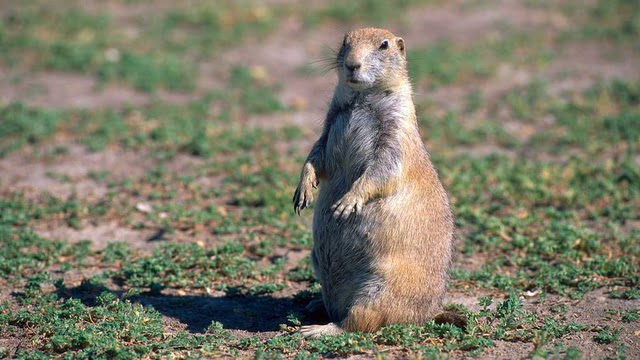Quck answer
Prairie dogs are social animals that play a vital role in the ecosystem. They are considered keystone species, meaning other animals rely on them for survival. Prairie dogs create burrows that provide shelter for themselves and other animals, such as burrowing owls and snakes. They also help aerate the soil and promote plant growth by eating grasses and other vegetation. Additionally, their burrows can help prevent erosion and regulate water flow. Despite their ecological importance, prairie dogs are often viewed as pests and targeted for extermination. Understanding their value to the ecosystem can help promote conservation efforts and protect these important animals.
Wild Animals

Prairie dogs may not look like typical rodents, but they are actually members of the squirrel family. They are small, chubby critters that live in the grasslands of America’s Central and Western plains. Despite their name, they are not dogs at all. However, they are incredibly intelligent animals that do more than just pop their heads out of holes.
Prairie Dogs’ Habitat and Lifestyle
There are five different types of prairie dogs, including black-tailed, Utah, Mexican, white-tailed, and Gunnison. They range in size from 12 to 17 inches long and weigh between 1 and 3 pounds. These social animals live in little groups that consist of a few breeding females, one or two males, and their offspring. The burrows they dig lead to prairie dog towns that can house tens of thousands of these animals. Each coterie has separate rooms for sleeping, rearing young, and eliminating waste.
The piles of dirt above ground next to the entrance of a prairie dog burrow serve as footstools, which give the small mammals a better vantage point to spot predators, including eagles, hawks, owls, ravens, coyotes, badgers, ferrets, and snakes. Prairie dogs are incredibly smart and have specific duties such as foraging, interacting with others, maintaining burrows, and looking for unwanted guests.
Despite being rodents, prairie dogs are unique and fascinating animals that are worth learning about and appreciating.
Prairie dogs are highly sociable creatures and often show affection towards each other by hugging or kissing. They possess a sophisticated communication system that they use to alert their fellow inhabitants of potential danger. Though the warning sounds may appear simple to us, they are actually complex and purposeful. When they spot a predator, they emit a sharp warning sound and then dive into their burrows while continuing to bark at a rate of 40 barks per minute. This warns other members of the town of the intruder’s location and proximity. Prairie dogs can even distinguish between different types of humans, such as those carrying guns. When two groups of prairie dogs meet, confrontations can occur that involve staring, teeth chattering, tail flailing, and fighting that can last up to 30 minutes. Prairie dogs mainly feed on grasses, roots, seeds, and leafy plants, with occasional insects. They clear the area around their burrows to make it harder for predators to sneak up on them and provide cover for other species such as toads, small rabbits, and rattlesnakes. They also attract insects that feed birds, provide nitrogen-rich waste that fertilizes soil and plants, and benefit approximately 150 other species. However, ranchers and farmers view them as pests that compete with their livestock for food and pose a safety hazard.
The decline of prairie dogs is largely attributed to the idea that they are pests. In the early 1900s, there were approximately 5 billion of these rodents in western North America. However, their population has since decreased by around 98 percent, leaving only about 100 million remaining. Plagues, poisonings, shootings, and bulldozing are some of the reasons behind this decimation. Currently, the Utah and Mexican prairie dogs are listed as threatened and endangered species, respectively, while other species are being constantly monitored. Prairie dogs are known for their ability to create new terms for unfamiliar things and are believed to have one of the most advanced communication systems among animals.
FAQ
1. What are prairie dogs?
Prairie dogs are small, burrowing rodents that live in North America. They are sociable animals that live in large colonies called “towns”. Prairie dogs are herbivores that feed on grasses, seeds, and other plants.
2. Why are prairie dogs important?
Prairie dogs play an important role in the ecosystem. Their burrowing helps to aerate the soil and increase water infiltration. They also help to maintain the grasslands by keeping the vegetation short. Prairie dog colonies provide habitat for a variety of other animals, such as burrowing owls, snakes, and ferrets.
3. Are prairie dogs endangered?
Some species of prairie dogs, such as the black-tailed prairie dog, are considered to be threatened or endangered due to habitat loss and disease. However, other species, such as the white-tailed prairie dog, are still abundant in some areas.
4. Do prairie dogs make good pets?
No, prairie dogs do not make good pets. They are wild animals that require a specific diet and living conditions. In many states, it is illegal to keep prairie dogs as pets without a permit.
5. Can prairie dogs carry diseases?
Yes, prairie dogs can carry diseases that can be transmitted to humans. One example is the bubonic plague, which is transmitted by fleas that live on prairie dogs. However, the risk of contracting a disease from a prairie dog is low if you avoid handling them and their feces.
6. How can I help prairie dogs?
You can help prairie dogs by supporting conservation efforts and protecting their habitat. You can also avoid using pesticides and herbicides that can harm prairie dogs and their food sources. Additionally, you can educate others about the importance of prairie dogs and their role in the ecosystem.
7. What is being done to conserve prairie dogs?
Conservation efforts for prairie dogs include habitat preservation, captive breeding programs, and disease management. Some organizations, such as the Prairie Dog Coalition, work to raise awareness and advocate for the protection of prairie dogs.





Leave a Reply